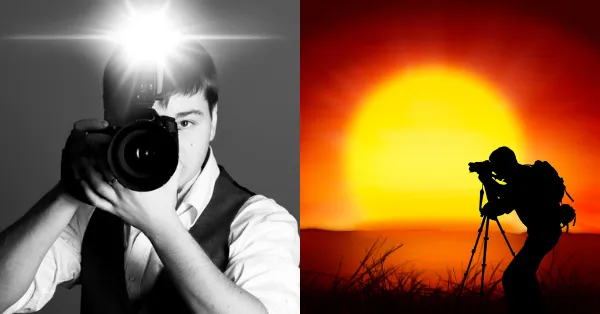Natural light is one of the most powerful tools at a photographer’s disposal. It’s versatile, dynamic, and, when used effectively, can elevate your photos to new heights. Whether you’re shooting portraits, landscapes, or still life, understanding how to work with natural light can make all the difference in your photography. In this guide, we’ll explore how to use natural light to create stunning images, no matter the conditions.
1. Understanding the Different Types of Natural Light
Natural light varies throughout the day, and each type of light offers unique qualities that can be harnessed for different photographic effects.
- Golden Hour: The golden hour, shortly after sunrise and before sunset, provides soft, warm light that’s ideal for capturing beautiful, flattering portraits and landscapes. The low angle of the sun during this time creates long shadows and adds a golden hue to your images, making them glow with warmth and depth.
- Blue Hour: The blue hour occurs just before sunrise and after sunset when the sun is below the horizon. This time of day offers cool, bluish light that can create a serene and mystical atmosphere in your photos. It’s perfect for capturing landscapes, cityscapes, and night scenes with a touch of magic.
- Midday Sun: Shooting in the midday sun can be challenging due to the harsh, direct light that creates strong shadows and highlights. However, with the right techniques, you can use this light to your advantage. Look for ways to soften the light, such as by finding shade or using a reflector, or embrace the high contrast for dramatic effects.
- Overcast Light: Cloudy days provide diffused, soft light that’s even and flattering, making it ideal for portrait photography. The lack of harsh shadows allows for more balanced exposure, and the subdued light can enhance colors and details in your subject.

2. Positioning Your Subject
The direction of natural light relative to your subject is crucial for achieving the desired effect in your photos. Here are some key positioning techniques:
- Front Lighting: When the light source is directly in front of your subject, it evenly illuminates their face or the object you’re photographing. This type of lighting minimizes shadows and is great for capturing clear, detailed images. However, it can sometimes make photos appear flat, so it’s important to add depth by positioning your subject slightly off-center or incorporating elements in the background.
- Side Lighting: Side lighting, where the light source is to the side of your subject, adds depth and dimension by creating shadows and highlights. This type of lighting is excellent for bringing out textures and creating a sense of drama in your photos. It’s often used in portrait photography to add a three-dimensional effect to the subject’s face.
- Backlighting: Backlighting occurs when the light source is behind your subject, casting a glow around them and creating a silhouette effect. This can produce stunning, ethereal images, especially during the golden hour. To avoid losing detail in your subject, you can use a reflector or fill flash to illuminate the front while still capturing the beautiful backlit glow.
3. Controlling the Light
While natural light can be beautiful, it’s not always perfect. Learning to control and modify natural light can help you achieve the best results.
- Using Reflectors: Reflectors are an excellent tool for bouncing light onto your subject, especially when shooting in harsh light or deep shadows. A white reflector provides soft, neutral light, while a silver or gold reflector can add warmth and enhance highlights.
- Finding Shade: On bright, sunny days, finding shade can help diffuse the light and reduce harsh shadows. Look for natural shade from trees, buildings, or awnings to create softer, more flattering light for portraits and close-ups.
- Using Diffusers: A diffuser can soften the light, especially in harsh midday sun. By placing a diffuser between the light source and your subject, you can create a more even light that reduces contrast and harshness.
- Window Light: When shooting indoors, use window light as a natural, soft light source. Position your subject near a window for beautiful, diffused lighting. Experiment with the direction of the light by moving your subject closer to or farther from the window, or by adjusting the angle at which the light hits them.
4. Adapting to Changing Light Conditions
Natural light is constantly changing, and being able to adapt to these changes is a key skill in photography.
- Adjusting Camera Settings: As the light changes, you may need to adjust your camera settings to maintain proper exposure. Use a wider aperture (lower f-stop) to let in more light during low-light conditions, or increase your ISO for brighter images. On the other hand, in bright conditions, a narrower aperture (higher f-stop) and lower ISO can prevent overexposure.
- Embracing Shadows: Don’t shy away from shadows—they can add depth, contrast, and intrigue to your photos. Learn to use shadows creatively, whether by incorporating them into your composition or using them to frame your subject.
- Using Natural Light Indoors: When shooting indoors, position your subject near a window or other natural light source. You can use sheer curtains to diffuse the light and create a soft, even glow. Experiment with different angles and distances to find the most flattering light.
5. Enhancing Natural Light in Post-Processing
Post-processing can help you enhance the natural light in your photos and correct any issues that occurred during shooting.
- Adjusting Exposure: If your photo is underexposed or overexposed, you can adjust the exposure in post-processing to achieve the desired brightness and contrast. Tools like Lightroom or Photoshop offer precise control over exposure, highlights, and shadows.
- Enhancing Warmth: During the golden hour, the light naturally has a warm tone. You can enhance this warmth in post-processing by adjusting the white balance or using color grading tools to bring out the golden hues.
- Balancing Highlights and Shadows: Post-processing allows you to balance the highlights and shadows in your image, ensuring that no details are lost in either. This is especially useful when dealing with high-contrast scenes, such as backlit subjects or harsh sunlight.
Conclusion
Natural light is one of the most powerful elements in photography, offering endless possibilities for creating beautiful, evocative images. By understanding the different types of natural light and how to position your subject, control the light, and adapt to changing conditions, you can harness its full potential. Whether you’re shooting portraits, landscapes, or still life, mastering the use of natural light will elevate your photography and help you create stunning photos that capture the essence of your subject.










